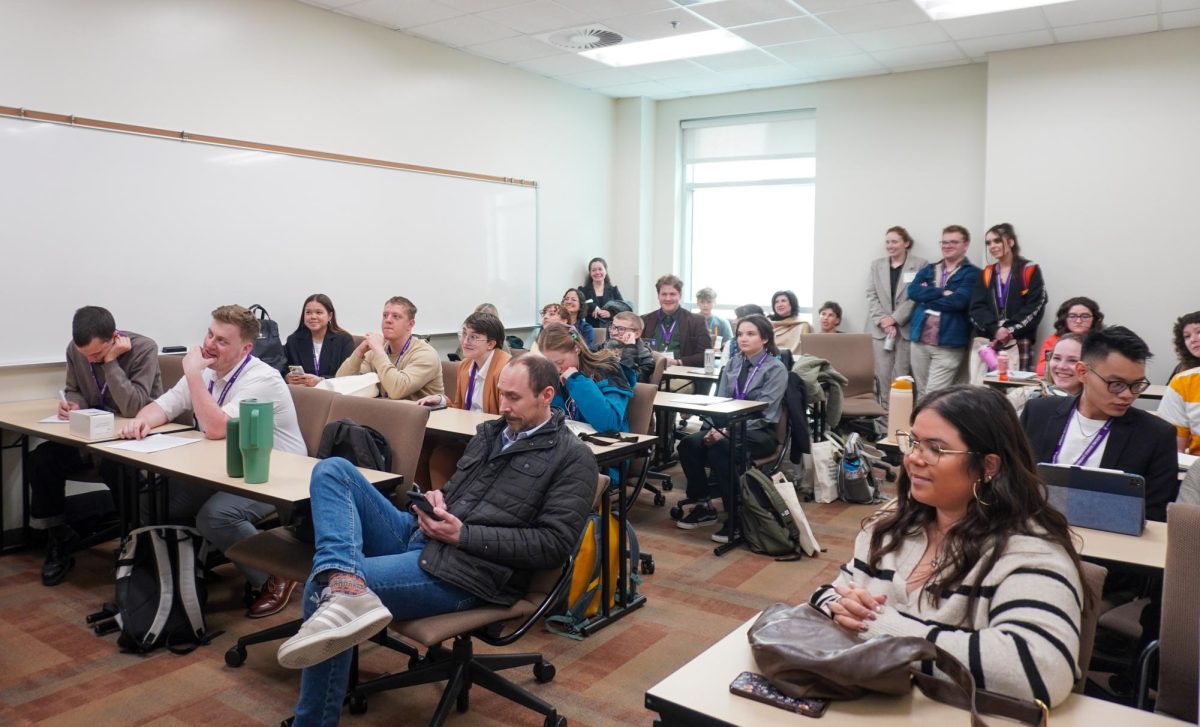
The Weber State University community was invited to learn about their evolutionary origins on March 28 with the 206 bones of Brian Switek.
Switek is the author of several critically acclaimed books about “lost worlds,” including his latest release, “Skeleton Keys: The Secret Life of Bone.” During his visit to WSU, he spoke about the human connection to other creatures through time, such as the Australopithecine skeleton Lucy, the Dometradon, Metaspringanon and Protofish.
“When I first read Brian’s book ‘My Beloved Brontosaurus,’ I was doing my PhD. I picked it up because I was very interested in Paleoecology. I think that what Brian does is a nice mix between Paleontology, Paleoecology and Geology,” zoology professor Rebecka Brasso said.
Switek demonstrated to students through a hyena skull that scientists can view a fossil and immediately understand the element that it fits into. From its diet, living conditions, health, the way it moves and its biomechanics, an organism’s remains can reveal to scientists many facts about the history and abilities of those who walked before humans.
“Even though paleontology is old, we are still able to learn so much about our ancestral past and evolution as a species,” geography student Nathan Blue said. “It always gives me a certain drive to not give up on things, that maybe there always is something new to be learned.”
The world has certainly learned more with the discovery of Lucy, the hominin skeleton paleontologists dated to 3.4 million years ago.
Swistek explained that the jaws of the fossil are far bigger than the modern human due to the fact humans were more herbivorous in the past. This fact also relates to the rib cage, which is more funnel shaped in order to ferment plant materials.
According to Swistek, like those belonging to Lucy, “bones allow us to manipulate the world in the way that we do.” He went on to describe that the way humans eat, move, react to the natural environment and socialize are all things that make up the modern man and woman.
“The evolution of species are what we think of as major innovations, but they’re really just shades different from us. This is where bones come in to connect us to our history, the world around us and our place as humans in the world,” Swistek said. “After all, we are not separate from nature but an especially unusual manifestation of it,” Swistek said.



















